A Look at GENKI 3rd Edition
GENKI: An Integrated Course in Elementary Japanese is a study resource for people who are starting to learn Japanese. It is designed to comprehensively build communication competencies across all four skill areas—listening, speaking, reading, and writing.
GENKI consists of 23 lessons, divided into two volumes of textbooks and workbooks. Vol. 1 contains Lessons 1–12, and Vol. 2 covers Lessons 13–23. The audio material of the textbooks and workbooks can be downloaded and played on mobile devices by using an app called OTO Navi.
→ How to download OTO Navi
Completion of Vol. 1 should place you at a skill level on par with JLPT N5 or CEFR A1. Vol. 2 is intended to further raise your abilities to N4 or A2.
Each textbook volume is divided into two main sections: Conversation and Grammar, and Reading and Writing.
- Conversation and Grammar:
-
Develops speaking and listening skills while building grammar knowledge and vocabulary.
Almost all of the basic sentence patterns for beginners are covered, ranging from desu/masu to the honorific, passive, causative, and causative-passive forms. → Syllabus of the Dialogue and Grammar Section - Reading and Writing:
-
Cultivates reading and writing skills, including mastery of hiragana, katakana, and kanji.
317 characters are introduced, including kanji for N4 and N5 levels. → Kanji Introduced in the Reading and Writing Section*Vocabulary: Approximately 1700 basic words are covered.
Following is the overall structure of GENKI 1 & 2.
| GENKI 1 | ||
|---|---|---|
| Conversation and Grammar | Reading and Writing | |
| あいさつ Greetings・すうじ Numbers | ||
| Lesson 1 | あたらしいともだち New Friends | ひらがな Hiragana |
| Lesson 2 | かいもの Shopping | カタカナ Katakana |
| Lesson 3 | デートの約束 Making a Date | まいにちのせいかつ Daily Life |
| Lesson 4 | 初めてのデート The First Date | メアリ-さんのしゅうまつ Mary’s Weekend |
| Lesson 5 | 沖縄旅行 A Trip to Okinawa | りょこう Travel |
| Lesson 6 | ロバートさんの一日 A Day in Robert’s Life | 私のすきなレストラン My Favorite Restaurant |
| Lesson 7 | 家族の写真 Family Picture | メアリーさんのてがみ Mary’s Letter |
| Lesson 8 | バーベキュー Barbecue | 日本の会社員 Japanese Office Workers |
| Lesson 9 | かぶき Kabuki | ソラさんの日記 Sora’s Diary |
| Lesson 10 | 冬休みの予定 Winter Vacation Plans | 昔話「かさじぞう」 The Folktale Kasajizo |
| Lesson 11 | 休みのあと After the Vacation | 友だち・メンバー募集 Looking for Friends/Members |
| Lesson 12 | 病気 Feeling Ill | 七夕 Tanabata Festival |
| GENKI 2 | ||
|---|---|---|
| Conversation and Grammar | Reading and Writing | |
| Lesson 13 | アルバイト探し Looking for a Part-time Job | 日本のおもしろい経験 Interesting Experiences in Japan |
| Lesson 14 | バレンタインデー Valentine’s Day | 悩みの相談 Personal Advice Column |
| Lesson 15 | 長野旅行 A Trip to Nagano | 私が好きな所 My Favorite Place |
| Lesson 16 | 忘れ物 Lost and Found | まんが「ドラえもん」 The Manga Doraemon |
| Lesson 17 | ぐちとうわさ話 Grumble and Gossip | オノ・ヨーコ Yoko Ono |
| Lesson 18 | ジョンさんのアルバイト John’s Part-time Job | 大学生活 College Life |
| Lesson 19 | 出迎え Meeting the Boss | 手紙とメール Letters and E-mails |
| Lesson 20 | メアリーさんの買い物 Mary Goes Shopping | 猫の皿 A Cat’s Plate |
| Lesson 21 | どろぼう Burglar | 厄年 Unlucky Ages |
| Lesson 22 | 日本の教育 Education in Japan | 桜さんの日記 Sakura’s Diary |
| Lesson 23 | 別れ Good-bye | 顔文字と絵文字 Emoticons and Emoji |
1. Conversation and Grammar / Reading and Writing
As noted earlier, this textbook is divided into two main sections: Conversation and Grammar, and Reading and Writing. For each lesson, first go through the lesson in the Conversation and Grammar section, and then proceed to the corresponding lesson in the Reading and Writing section.
However, if you do not need to work on reading and writing, you can study the Conversation and Grammar section on a stand-alone basis.
2. Assumed study time
When using Genki in class, it is assumed that it takes about 200 hours to complete all 23 lessons (Conversation and Grammar: 6 hours each lesson, Reading and Writing: 3 hours each lesson). However, this is just a guideline, so if you don't have time or you want to study on your own, you can adjust it according to your learning environment and needs.
3. Orthography
The Conversation and Grammar section does not use kanji in Lessons 1 and 2; instead, the Japanese text is written only in hiragana/katakana with their romanized readings. From Lesson 3 onward, this section uses kanji but stops providing romanized readings, so you should strive to become able to read all hiragana and katakana by the end of Lesson 2. However, the readings of all kanji are given in hiragana so that this section can be studied by those who do not need to learn kanji. The Reading and Writing section does not provide readings in hiragana for kanji already studied.
4. Studying the Japanese script
Try to master all hiragana as you work through Lesson 1, and then do the same with katakana in Lesson 2. Start by reading the “Japanese Writing System” section (pp. 20–27) to familiarize yourself with the basics of Japanese orthography. Afterwards, begin practicing how to read and write hiragana/katakana, using the following resources.
Flashcards:
The hiragana/katakana charts in the Japanese Writing System section can be cut up into flashcards to aid your practice. (Workbook: see pp. 11–12 for hiragana, pp. 23–24 for katakana.)
Kana writing practice:
Lessons 1 and 2 of the workbook’s Reading and Writing section provide exercises for writing hiragana and katakana. (Workbook: see pp. 121–127 for hiragana, pp. 128–132 for katakana.)
Reading Practice/Writing Practice:
Lessons 1 and 2 of the textbook’s Reading and Writing section include practices for reading and writing hiragana/katakana as part of words and sentences.
Kanji are studied from Lesson 3 onward in the Reading and Writing section.
5. Using the Conversation and Grammar section
Dialogue
The dialogues present conversations based on various everyday situations that learners are likely to experience in Japan. They follow a progressive storyline revolving around an international student named Mary.
The dialogues contain the lesson’s new learning targets. Learn them after studying the vocabulary and grammar items presented in the lesson.
- ❶ Every lesson begins with a preview of the skills it will teach.
- ❷ Each dialogue has two audio recordings. The first is recorded as a normal conversation, and the second adds a pause after each sentence for practice.
Vocabulary
This is a list of the words and expressions that appear in the dialogues and practices. A good way to learn them is to repeatedly go over a handful at a time.
- ❶ There are two audio recordings of the vocabulary and English translations. The first presents each Japanese entry followed by its English equivalent, and the second is in the opposite order. Use the recordings to help you learn the words with your ears.
- ❷ Words that appear in the dialogues are marked with an asterisk.
- ❸ There is no need to memorize the kanji listed.
Grammar/Expression Notes
The Grammar section explains the grammar items presented in the lesson.
The commentary is written in an easy-to-follow style that avoids technical terms as much as possible.
The Expression Notes at the end provide commentary on expressions and words not included among the grammar points.
Practice
The Practice section contains exercises dealing with the points covered in the Grammar section. The workbook also provides practices for the grammar points covered in the lesson. First do the practices in the textbook, and then check your mastery by doing the ones in the workbook.
- ❶ The serial number of the corresponding grammar item is listed next to each practice’s heading. Be sure to read the grammar explanation before doing the practice.
- ❷ Exercises marked with a speaker icon have audio recordings of the cues and responses. Listen to the recording as you practice.
Additional Information
Some lessons include the following extra content.
・Useful Expressions:Lists of words and expressions associated with a particular topic.
・Culture Notes:Commentary on Japanese culture, lifestyles, etc.
・Let’s Find Out:Tasks that require you look up certain information on Japan.
6. Using the Reading and Writing section
The Reading and Writing section covers hiragana in Lesson 1, katakana in Lesson 2, and kanji in the remaining lessons.
Kanji list
Lesson 3 and subsequent lessons include a list of the new kanji that they cover. Each list presents around 15 characters, along with their readings, meanings, and stroke count/order, as well as words that contain them and English translations of those words. Try learning the characters by repeatedly going over a few at a time. Readings and words that are shaded should be memorized.
Kanji Practice
The kanji practices for GENKI I cover the new kanji learned, while those for GENKI II review kanji already studied and provide practice in new readings. Do these exercises after memorizing the target kanji of each lesson.
Reading Practice
The reading practices assume that you have learned the grammar points and vocabulary presented in the corresponding lesson in the Conversation and Grammar section.
Each lesson presents one or two readings, along with questions on their content. The readings for GENKI I are short passages on familiar topics, while those for GENKI II span a wide range of genres, including letters, stories, essays, and ads.
- ❶ An audio recording is available for each reading.
- ❷ English translations are provided for words not yet covered.
Writing Practice
Every lesson ends with a writing exercise.
Write about the topic provided using the expressions and kanji you have learned.
If time allows, do the exercise during class. If not, the exercise can be done as homework.
7. Appendix
Grammar Index
This index lists the Grammar entries of all lessons, as well as grammatical items from Expression Notes, Useful Expressions, and Culture Notes.
Vocabulary Index (J-E / E-J)
The vocabulary entries presented in this textbook are listed in Vocabulary Index 1 (a Japanese-English index in a-i-u-e-o order) and Vocabulary Index 2 (an English-Japanese index in alphabetical order).
Map of Japan / Numbers / Conjugation Chart
For your reference, the appendix also includes a map of Japan with a list of all prefectures, a table of Japanese numbers/counters that shows changes in pronunciation, and a chart of verb conjugations.
Textbooks & Workbooks
English Version
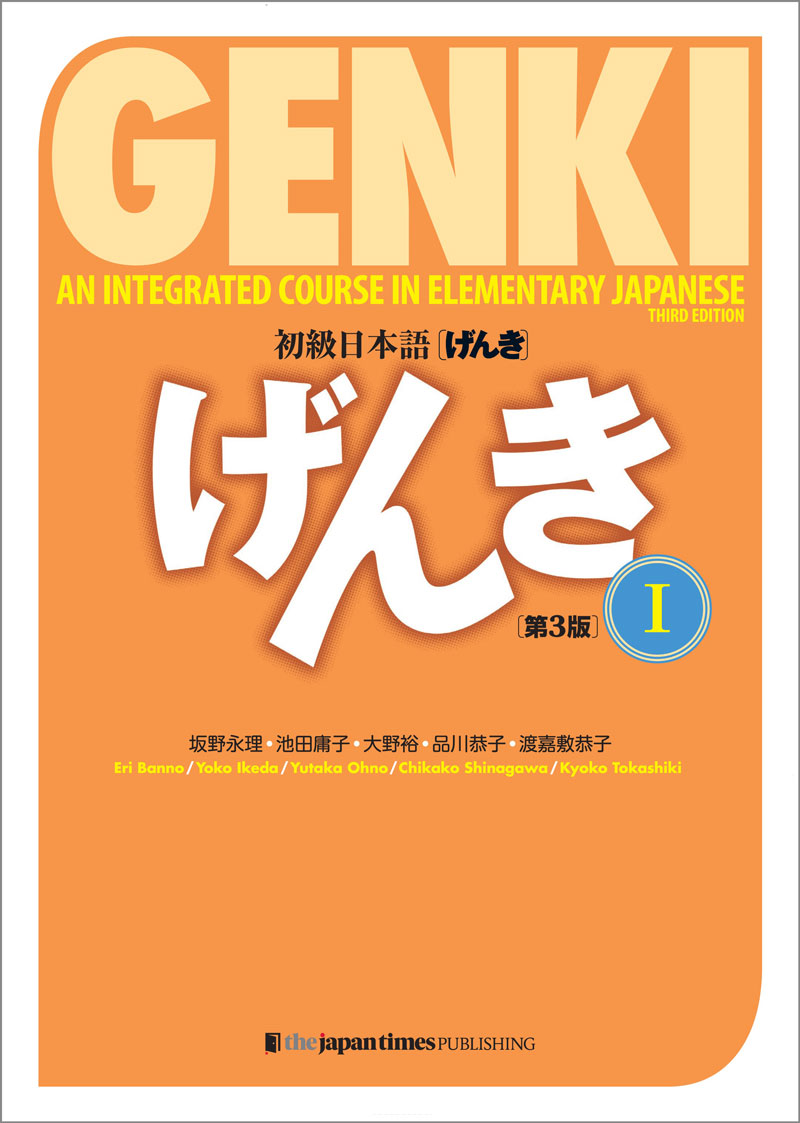
|
Textbook 1 [Third Edition]
(Lessons 1-12) ISBN: 978-4-7890-1730-5 257 × 182 mm/384 pages Paper book e-book DIGITAL STORE e-book |

|
Workbook 1 [Third Edition]
(Lessons 1-12) ISBN: 978-4-7890-1731-2 257 × 182 mm/152 pages Paper book e-book DIGITAL STORE e-book |

|
Textbook 2 [Third Edition]
(Lessons 13-23) ISBN: 978-4-7890-1732-9 257 × 182 mm/392 pages Paper book e-book DIGITAL STORE e-book |

|
Workbook 2 [Third Edition]
(Lessons 13-23) ISBN: 978-4-7890-1733-6 257 × 182 mm/132 pages Paper book e-book DIGITAL STORE e-book |
Version française (French Version)
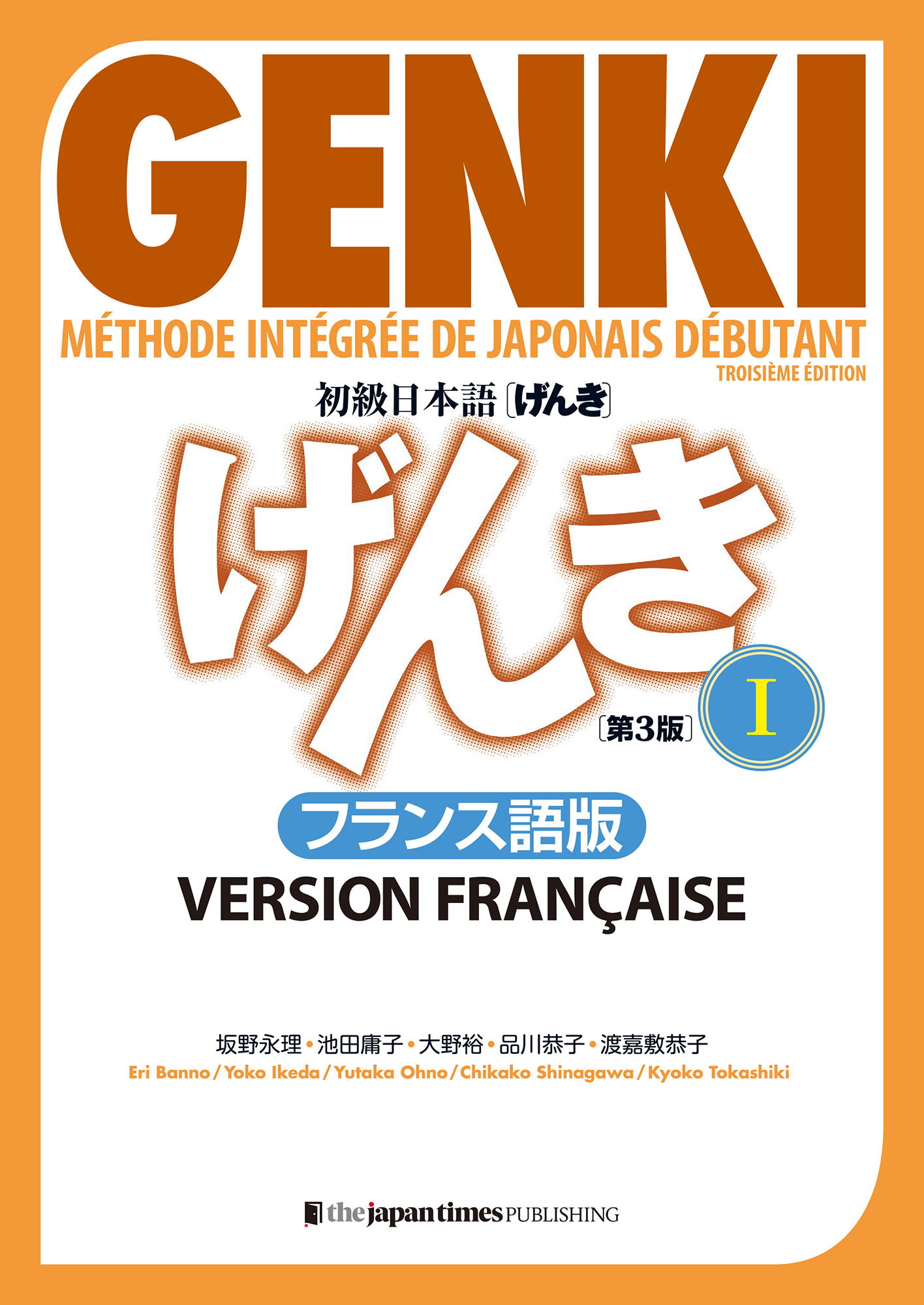
|
Manuel 1 [Troisième édition] Version française
Textbook 1 [Third Edition]
ISBN: 978-4-7890-1836-4
French Version 257 × 182 mm/384 pages Paper book e-book DIGITAL STORE e-book |
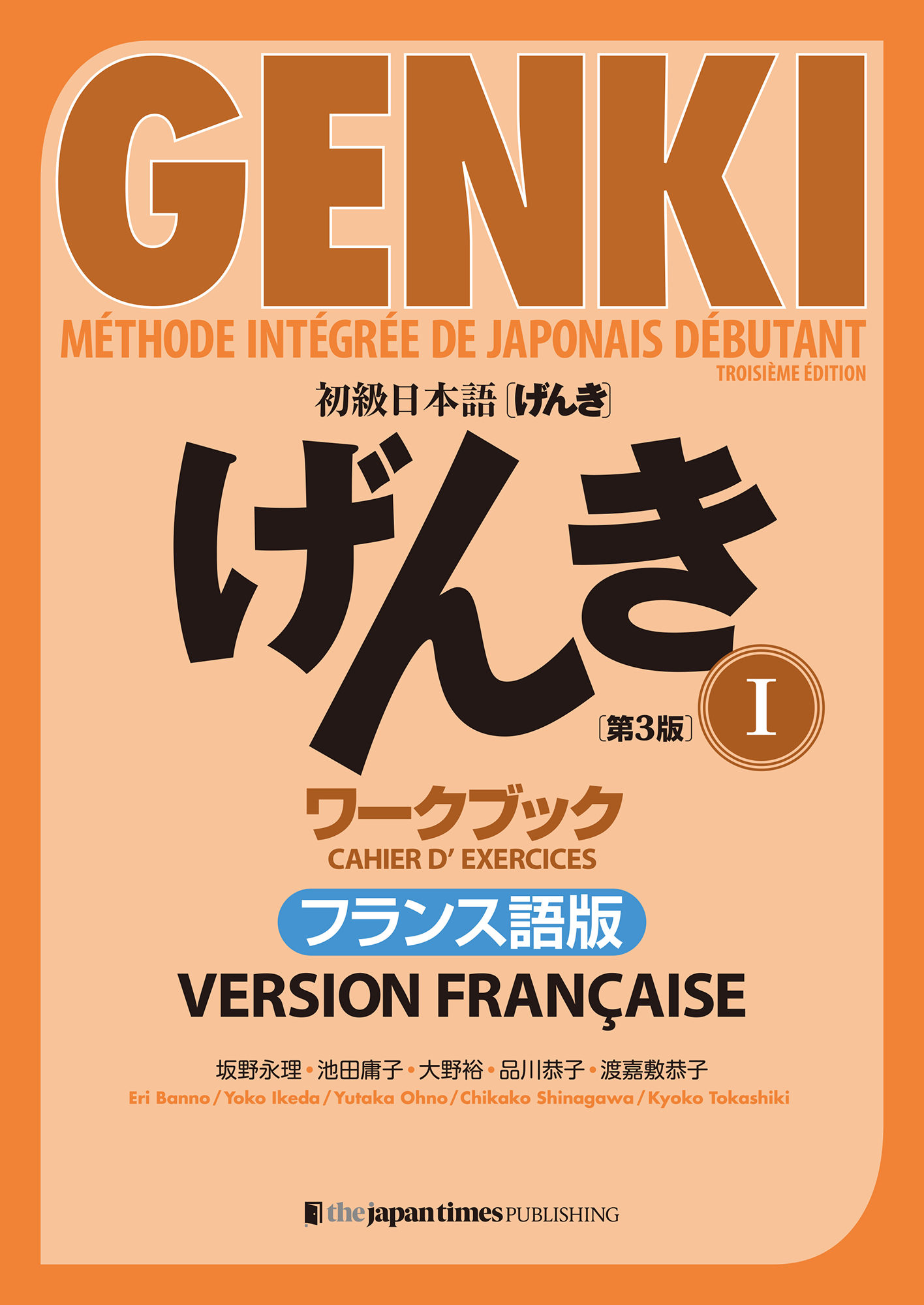
|
Cahier d’exercices 1 [Troisième édition] Version française
Workbook 1 [Third Edition]
ISBN: 978-4-7890-1837-1
French Version 257 × 182 mm/152 pages Paper book e-book DIGITAL STORE e-book |
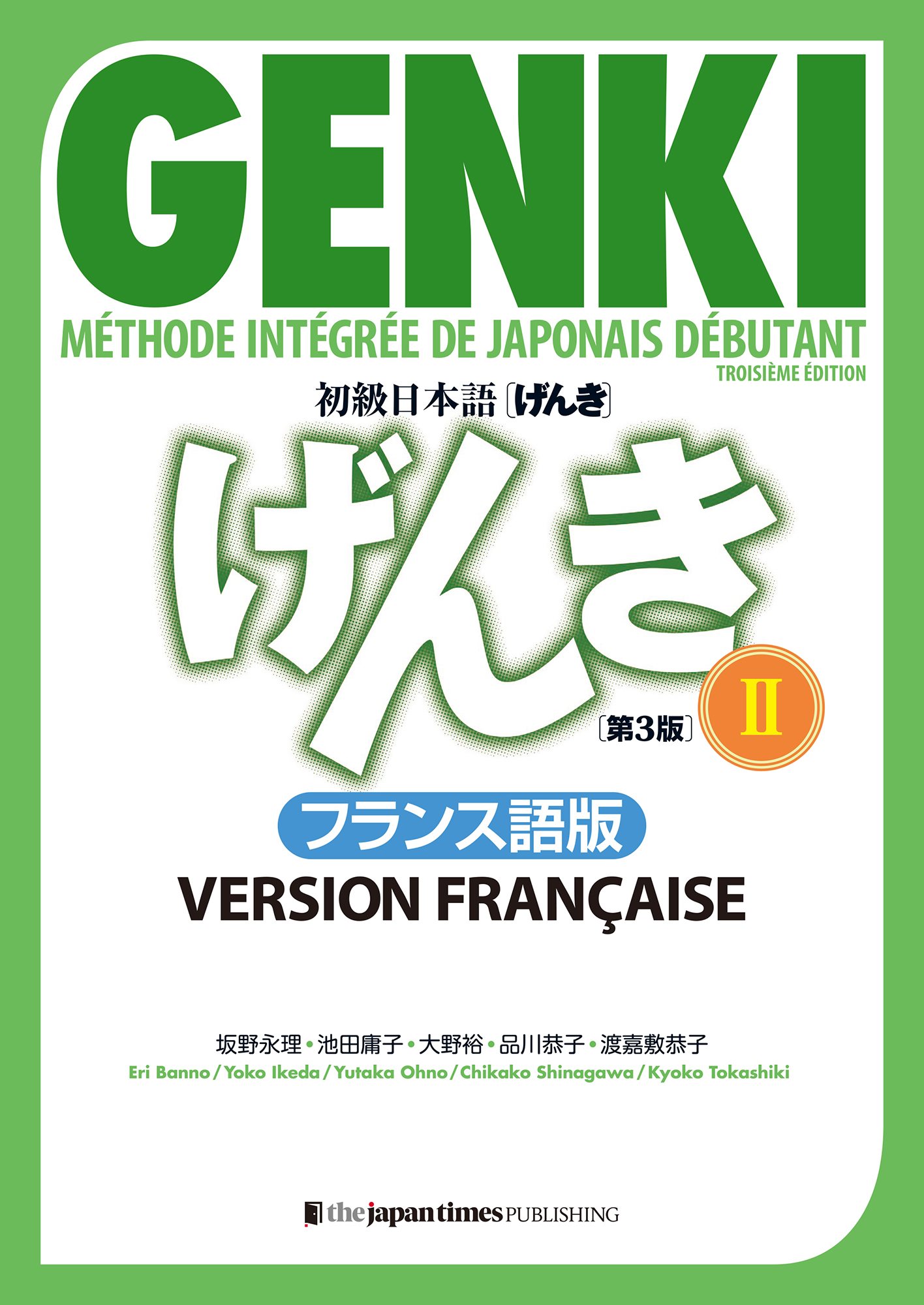
|
Manuel 2 [Troisième édition] Version française
Textbook 2 [Third Edition]
ISBN: 978-4-7890-1838-8
French Version 257 × 182 mm/392 pages Paper book e-book DIGITAL STORE e-book |
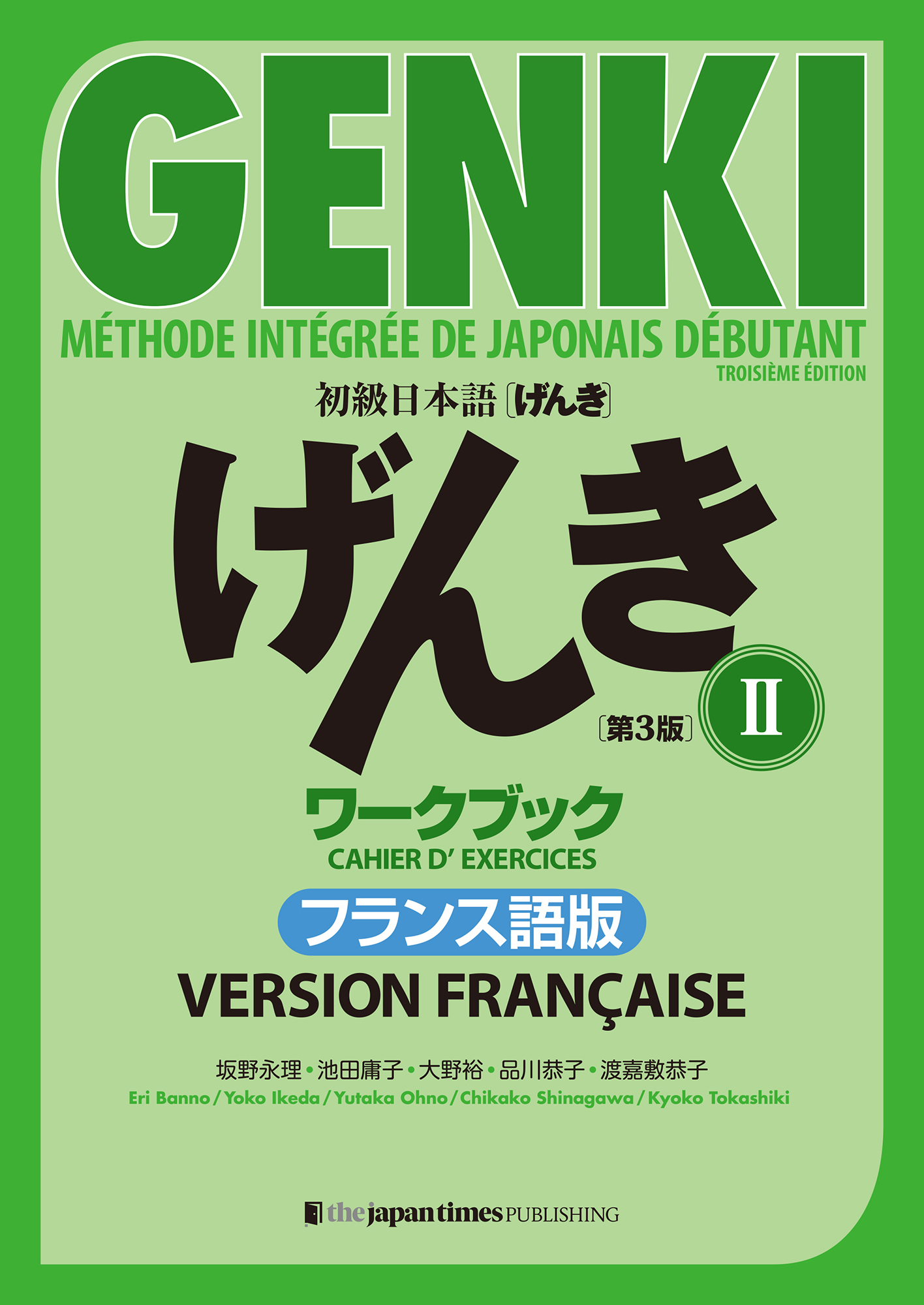
|
Cahier d’exercices 2 [Troisième édition] Version française
Workbook 2 [Third Edition]
ISBN: 978-4-7890-1839-5
French Version 257 × 182 mm/132 pages Paper book e-book DIGITAL STORE e-book |
Version en español (Spanish Version)
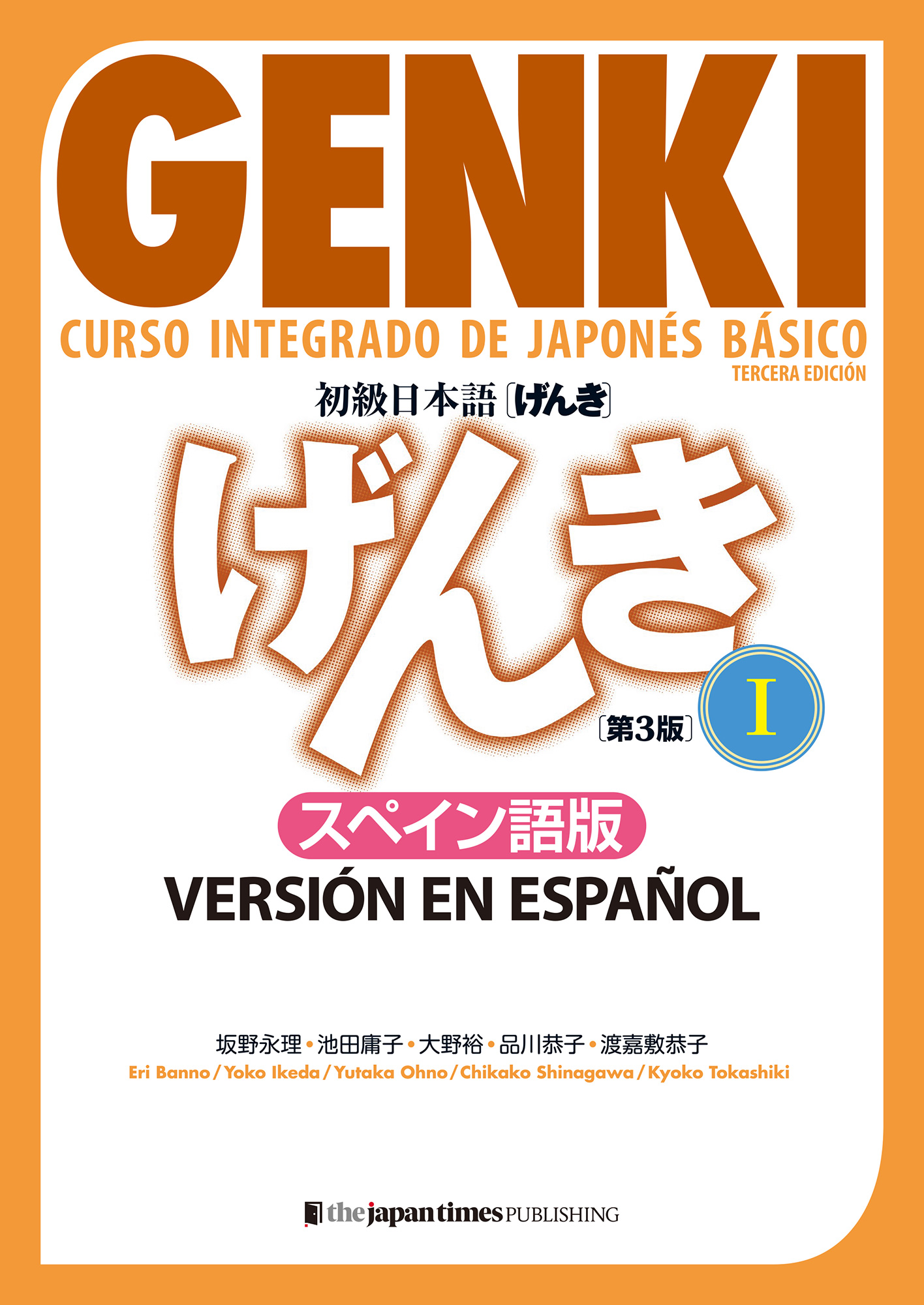
|
Texto 1 [Tercera edición] Version en español
Textbook 1 [Third Edition]
Paper bookSpanish Version e-book DIGITAL STORE e-book |
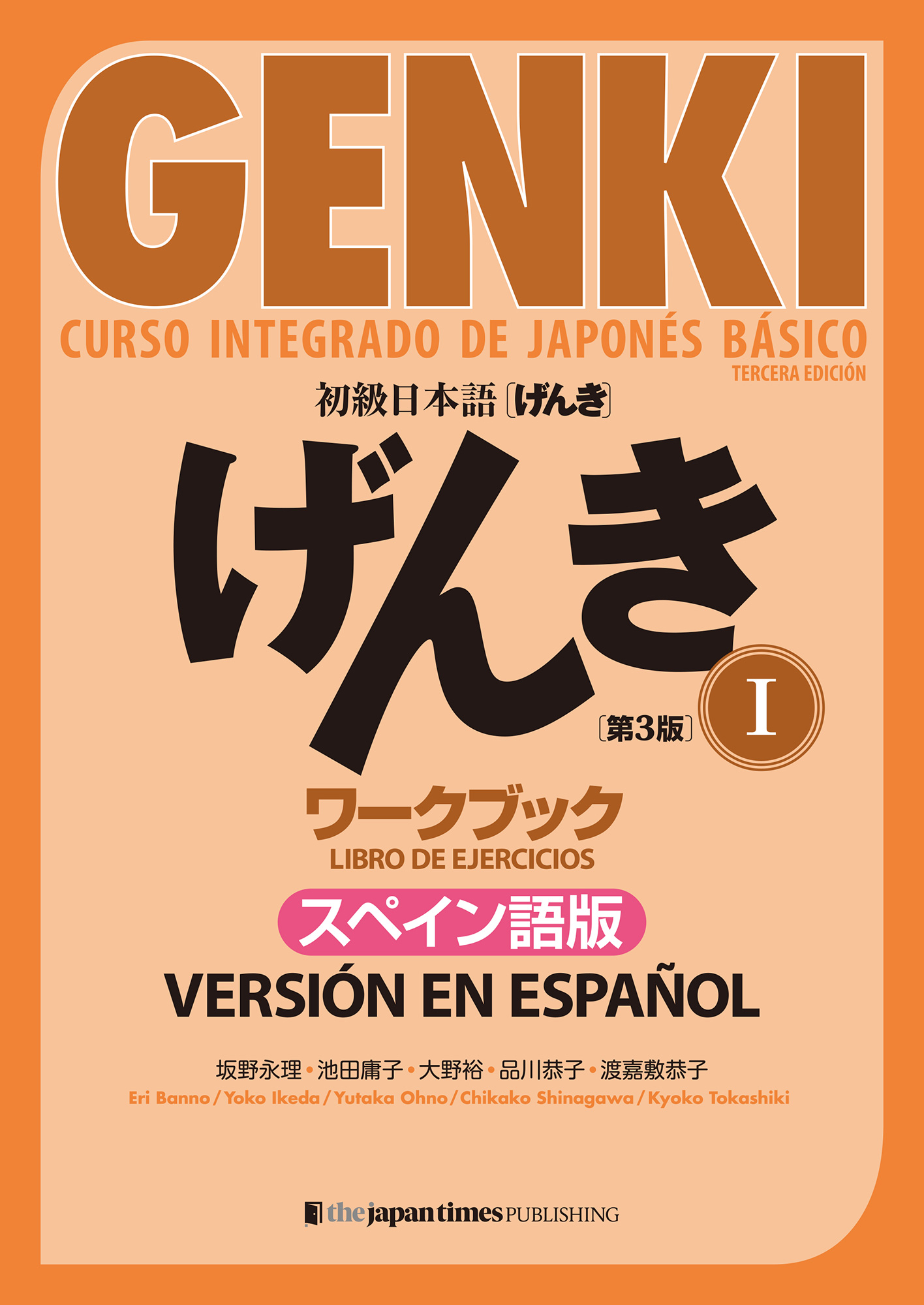
|
Libro de ejercicios 1 [Tercera edición] Version en español
Workbook 1 [Third Edition]
Paper bookSpanish Version e-book DIGITAL STORE e-book |
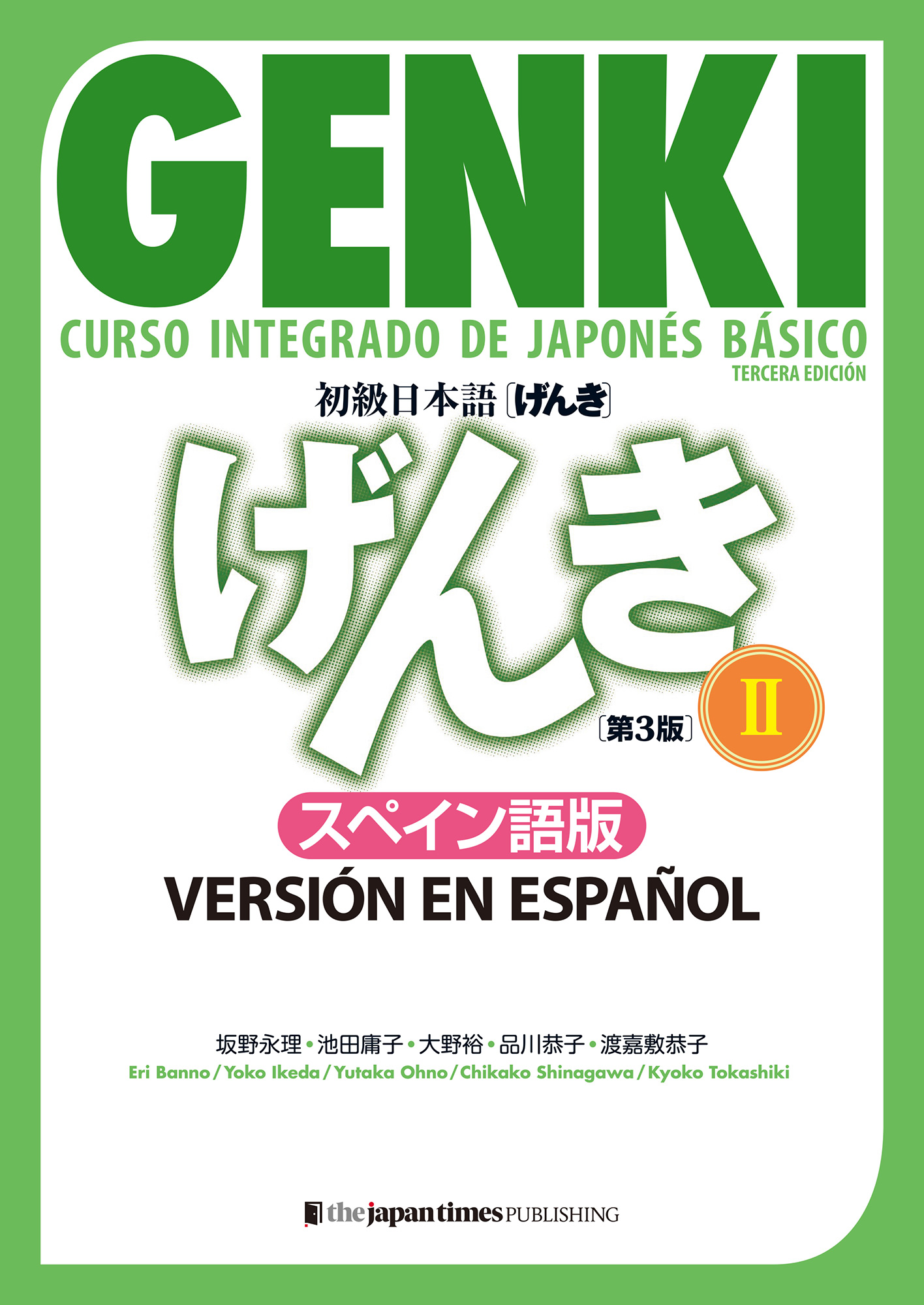
|
Texto 2 [Tercera edición] Version en español
Textbook 2 [Third Edition]
Paper bookSpanish Version e-book DIGITAL STORE e-book |
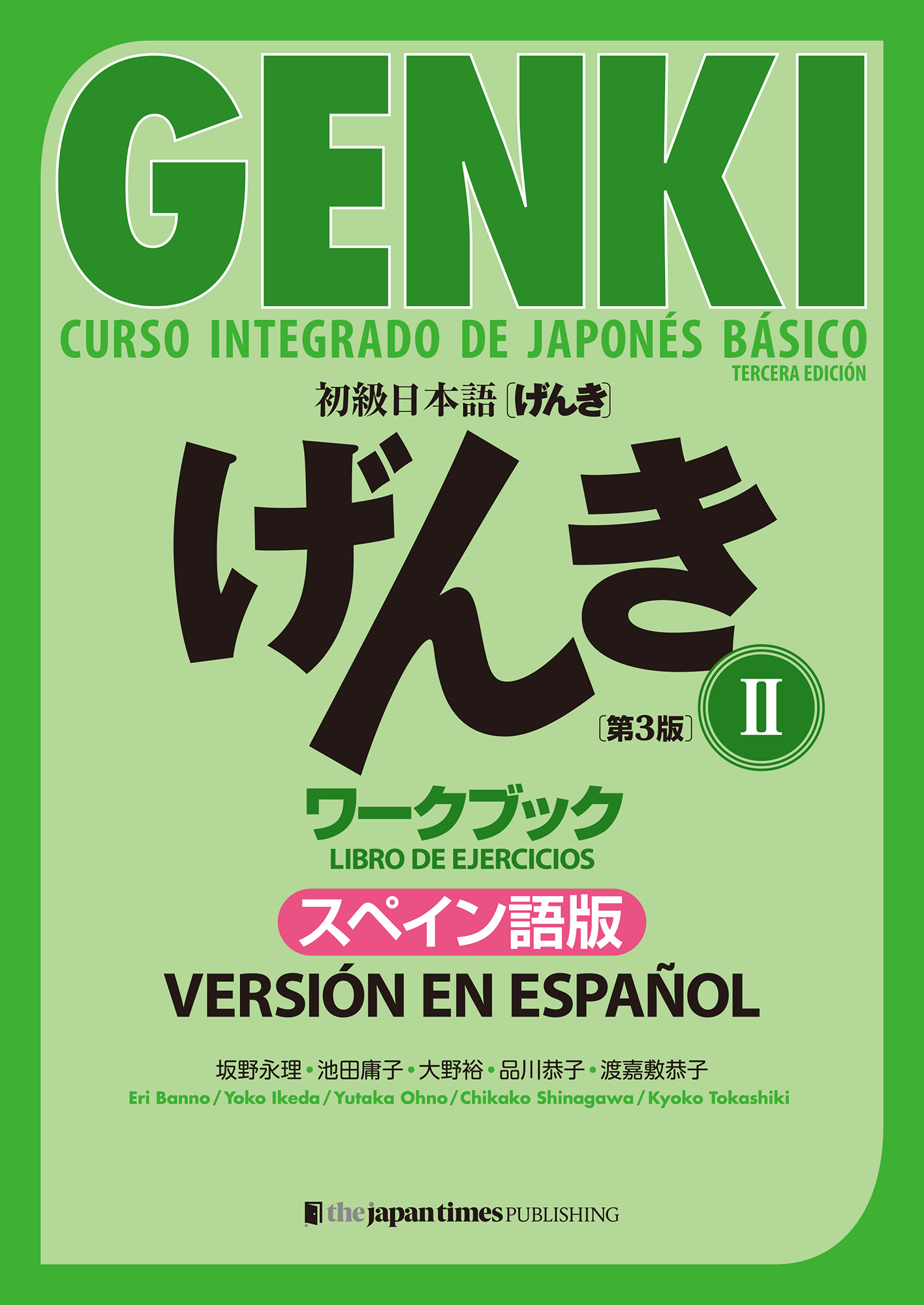
|
Libro de ejercicios 2 [Tercera edición] Version en español
Workbook 2 [Third Edition]
Paper bookSpanish Version e-book DIGITAL STORE e-book |
Teacher’s Guide & Answer Key

|
Answer Key [Third Edition] ISBN: 978-4-7890-1736-7 257 × 182 mm/82 pages Paper book e-book DIGITAL STORE e-book |
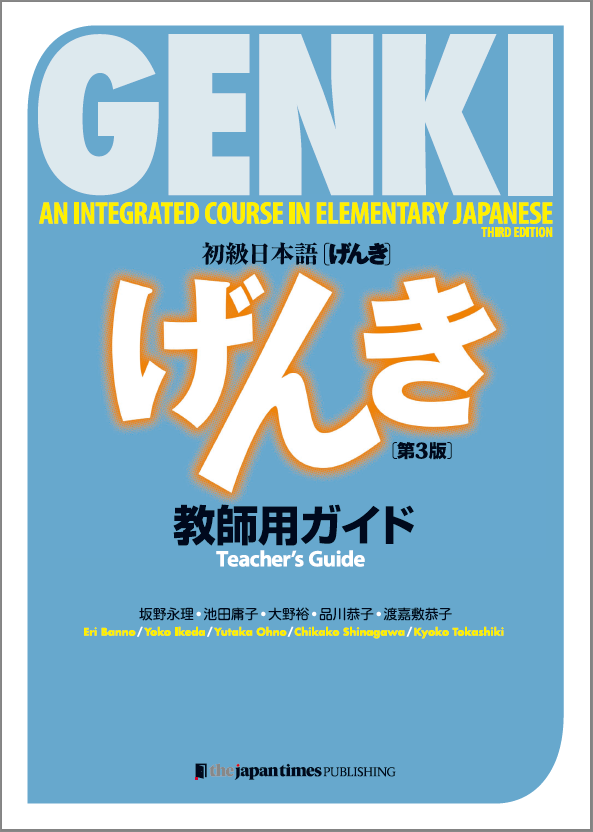
|
Teacher’s Guide [Third Edition] 257 x 182 mm/176 pages with Answer Key (82 pages) Paper book e-book DIGITAL STORE e-book |
GENKI Japanese Readers
Box version
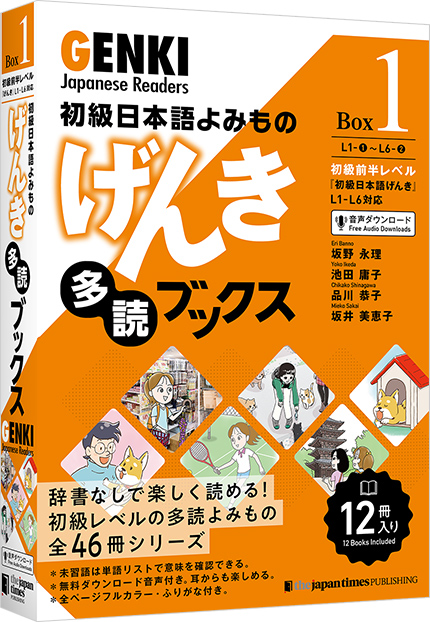
|
GENKI Japanese Readers [Box 1] (L1-L6)
ISBN: 978-4-7890-1831-9 210×148/12-volume set Paper book e-book DIGITAL STORE e-book |
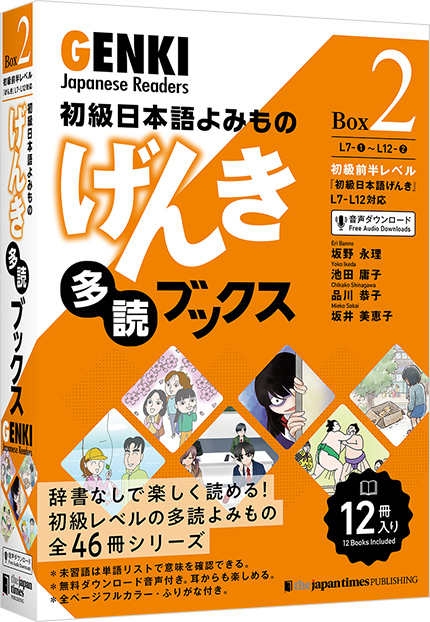
|
GENKI Japanese Readers [Box 2] (L7-L12)
ISBN: 978-4-7890-1832-6 210×148/12-volume set Paper book e-book DIGITAL STORE e-book |
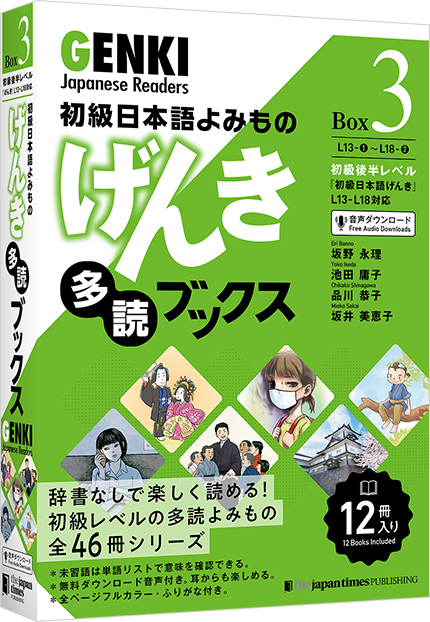
|
GENKI Japanese Readers [Box 3] (L13-L18)
ISBN: 978-4-7890-1834-0 210×148/12-volume set Paper book e-book DIGITAL STORE e-book |
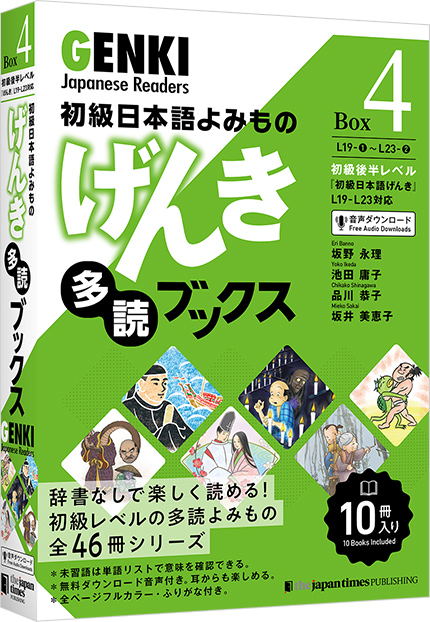
|
GENKI Japanese Readers [Box 4] (L19-L23)
ISBN: 978-4-7890-1835-7 210×148/10-volume set Paper book e-book DIGITAL STORE e-book |
For institutional customers
|
|
GENKI Japanese Readers [Vol.1]
(L1-L12:24-volume set) DIGITAL STORE e-book |
|
GENKI Japanese Readers [Vol.2]
(L13-L23:22-volume set) DIGITAL STORE e-book |
Teacherʼs Data Pack
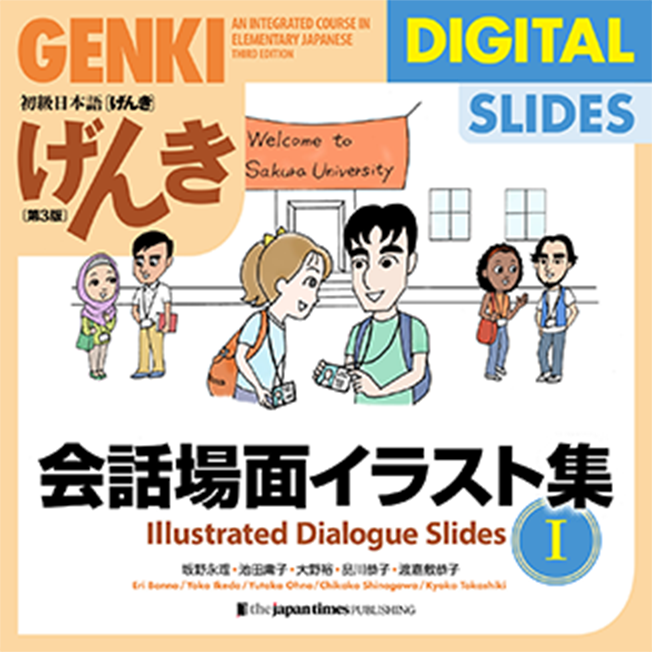
|
Illustrated Dialogue Slides 1
DIGITAL STORE download |
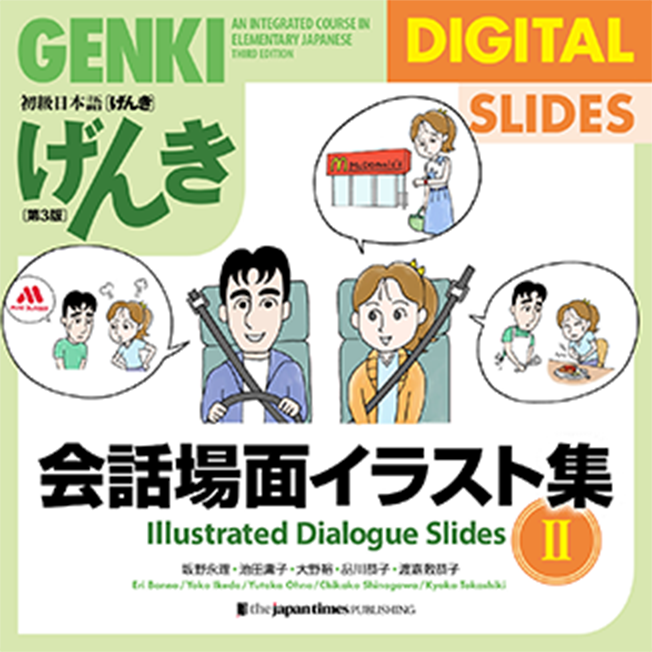
|
Illustrated Dialogue Slides 2
DIGITAL STORE download |
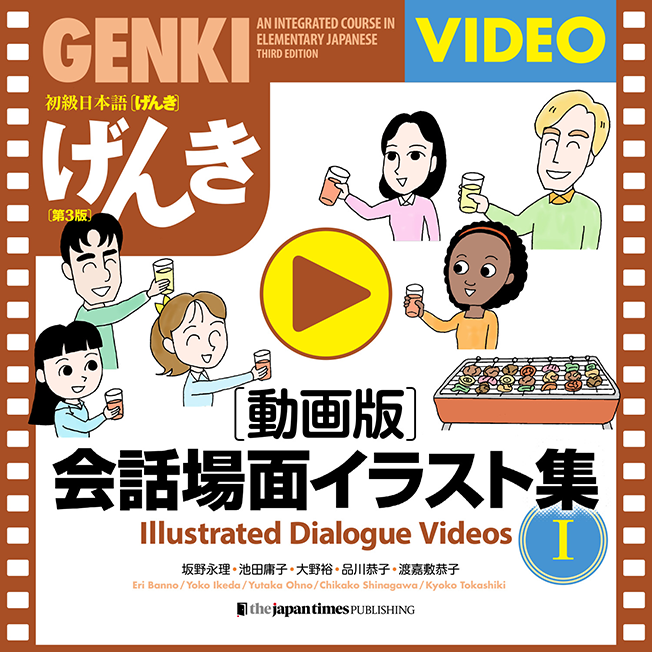
|
Illustrated Dialogue Videos 1
DIGITAL STORE download |
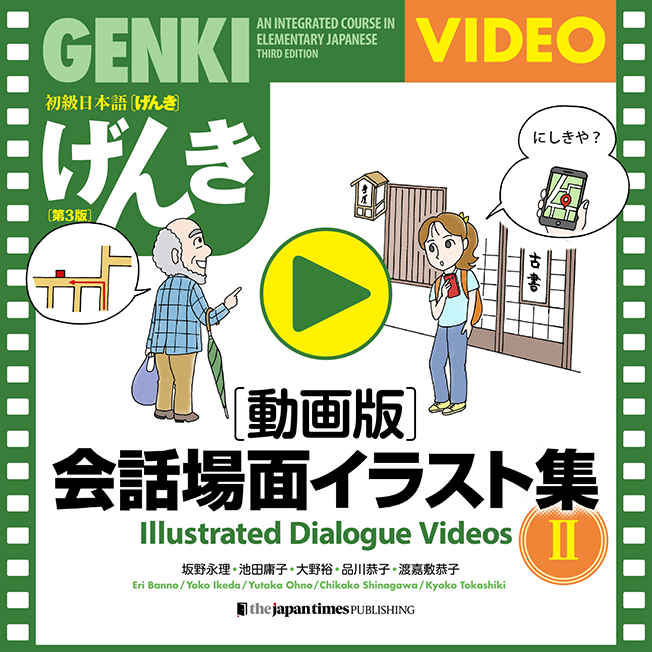
|
Illustrated Dialogue Videos 2
DIGITAL STORE download |
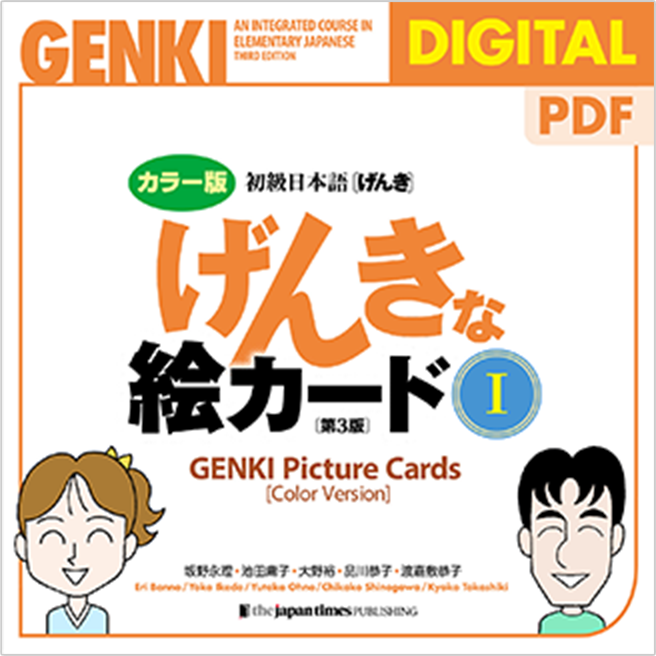
|
GENKI Picture
Cards [3rd Ed.]
(Color Version) 1
DIGITAL STORE download |
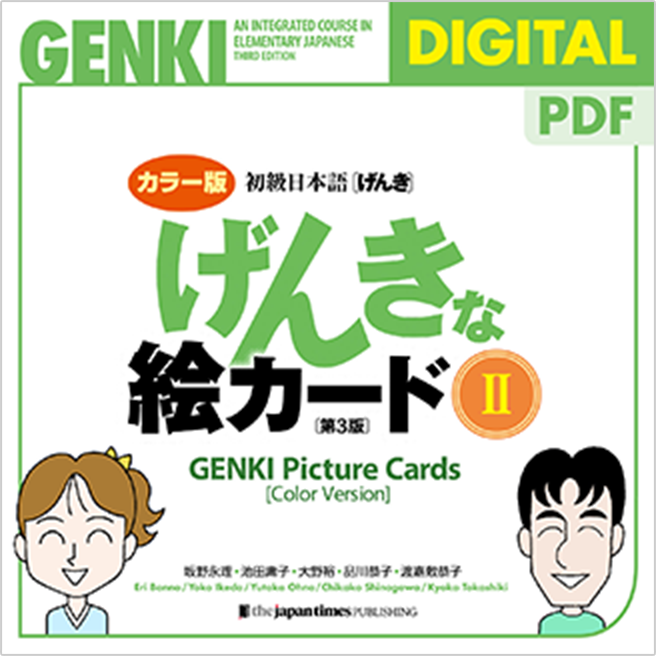
|
GENKI Picture
Cards [3rd Ed.]
(Color Version) 2
DIGITAL STORE download |
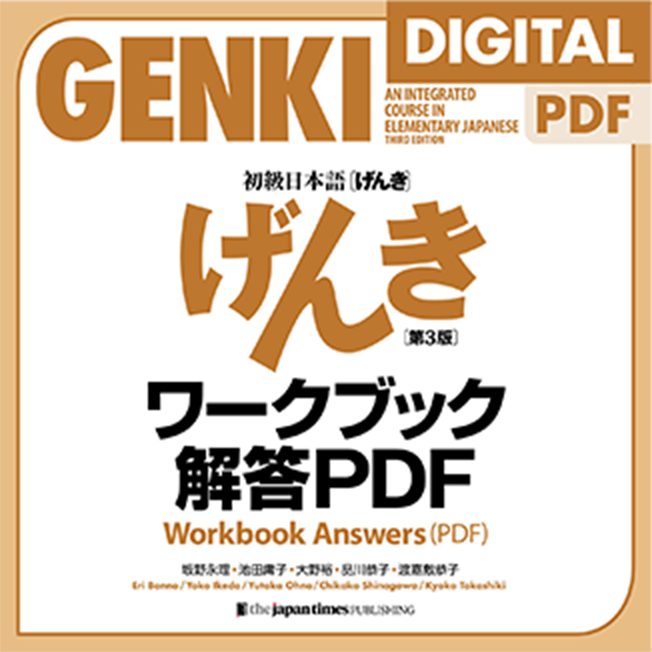
|
Workbook Answers (PDF)
DIGITAL STORE download |
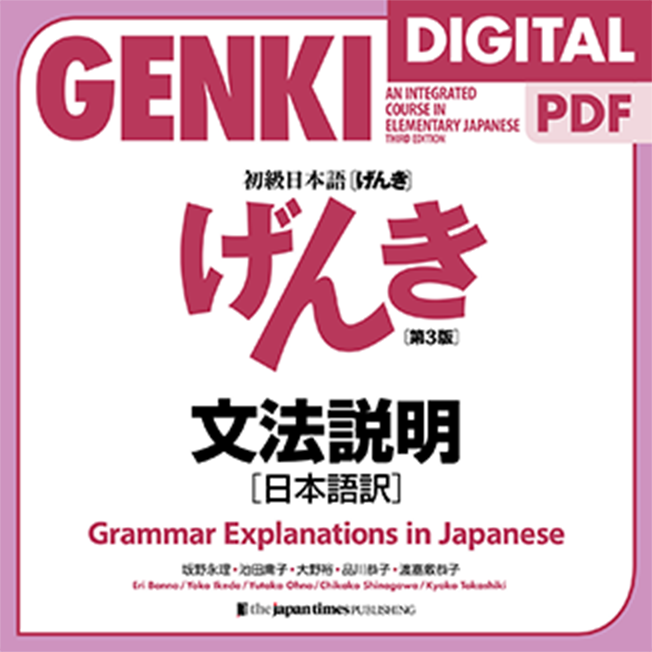
|
Grammar Explanations in Japanese
DIGITAL STORE download |
GENKI Apps
|
|
GENKI Vocab for 3rd Ed.
This app helps you learn all the words and expressions studied in the Conversation and Grammar section of GENKI 1 and 2. → Details |
|
GENKI Kanji for 3rd Ed.
Featuring around 1,100 kanji words, plus illustrations, this app aids your study of the readings and shapes of 317 kanji covered by GENKI 1 and 2. → Details |
|
|
GENKI Conjugation Cards
An app for mastering the conjugation of verbs and adjectives. Audio recordings, example sentences, and illustrations help you to efficiently learn 28 conjugation patterns. *This app is available for both the 2nd and 3rd ed. → Details |
Eri Banno
Eri Banno is a professor emeritus at Okayama University,and has previously taught Japanese at Nanzan University and Kansai Gaidai University. She earned her Ed.D. in education at Temple University.Her publications include the co-authored works 80 Communication Games for Japanese Language Teachers, Kanji Look and Learn and GENKI Japanese Readers (The Japan Times Publishing).
Yoko Ikeda
Yoko Ikeda is a professor at Ibaraki University,and has previously taught Japanese at Eastern New Mexico University, Pennsylvania State University,and Kansai Gaidai University. She earned her M.A. in comparative literature at Pennsylvania State University. Her publications include the coauthored Kanji Look and Learn and GENKI Japanese Readers (The Japan Times Publishing).
Yutaka Ohno
Yutaka Ohno is a professor emeritus at Ritsumeikan University’s Graduate School of Language Education and Information Science (LEIS), and has previously taught Japanese at the University of Massachusetts Amherst, Kansai Gaidai University, and Nagoya University. He earned his M.A. in linguistics at Sophia University, and enrolled in a doctoral program at the University of Massachusetts-Amherst.
Chikako Shinagawa
Chikako Shinagawa is a lecturer emeritus at the University of California, Santa Barbara, and has previously taught Japanese at the University of California, Irvine, and Kansai Gaidai University. She earned her M.A. in Japanese at the University of Wisconsin, Madison. Her publications include the co-authored Kanji Look and Learn and GENKI Japanese Readers (The Japan Times Publishing).
Kyoko Tokashiki
Kyoko Tokashiki is a former professor at Kansai Gaidai University, where she was involved in Japanese language education for many years, after having taught Japanese at Connecticut College and Ohio State University. She earned her M.A. in Japanese linguistics at Ohio State University. Her publications include the coauthored Kanji Look and Learn (The Japan Times Publishing).

|
Textbook
・Dialogue & Grammar : Lesson 7 ・Reading & Writing : Lesson 7 Preview the e-book on the Digital Store To listen to the audio version, click the audio symbol on the cover of the e-book. |

|
Workbook
・Dialogue & Grammar : Lesson 7 ・Reading & Writing : Lesson 7 Preview the e-book on the Digital Store To listen to the audio version, click the audio symbol on the cover of the e-book. |
Listed below are some of the universities/colleges that use GENKI as the main textbook for their Japanese courses.
United States and Canada
American University
Appalachian State University
Baylor University
Boston University
Bucknell University
California State University
Carson-Newman College
Claremont Colleges
Cornell University
Dickinson
College
Duke University
Florida International University
Florida State University
GEOS Language Academy, Montreal
Honolulu Comminity College
Irvine Valley College
Johns Hopkins University
Michigan State University
North Carolina State University
Oklahoma State University
Pennsylvania State University
Rutgers University
San Diego State University
San Francisco State University
San Jose State University
Shasta College
Southern Oregon University
St. Thomas University
Stanford University
SUNY Binghamton University
Temple University
The College of New Jersey
Tufts University
University of Alaska Fairbanks
University
of Arkansas at Monticello
University of California
University of Cincinnati
University of Delaware
University of Denver
University of Georgia
University of Houston
University of Illinois
University of Memphis
University of Michigan
University of Minnesota
University of Mississippi
University of Missouri
University of New Brunswick
University of New Hampshire
University of San Francisco
University of Southern Mississippi
University of Toronto
University of Victoria
University of Wisconsin
Kwantlen Polytechnic University
Mount Royal University
Simon Fraser University
University of British Columbia
University of Calgary
University of Winnipeg
Vancouver Island University
Australia and New Zealand
Australian Catholic University – Strathfield
Griffith University
La Trobe University
Macquarie University
Massey University
Monash University
RMIT University
Trinity College
University of Canberra
University
of Melbourne
University of Sydney
University of Western Sydney
Auckland University
University of Otago
Victoria University of Wellington
Europe
Copenhagen Business School
Ecole Centrale de Nantes
International School of Duesseldorf
Istituto Linguistico e Culturale IL MULINO
Justus-Liebig-Universitaet Giessen
Lulea Tekniska Universitet
Lund University
Newcastle University
Norwegian School of Economics and Business Administration
Norwegian University of Science and Technology
Oslo Handelsgymnasium
Rotterdam University
The Cheltenham Ladies College
Turku University
Universitaet
Bonn
Universitaet Frankfrt
University Mainz
University of Bologna
University of Bristol
University of Gothenburg
University of Oslo
University of Stockholm
Southeast Asia
University of Transport and Communications (Viet Nam)
Japan
Hitotsubashi University
Hokkaido University of Education, Hakodate
Josai International University
Kanda University of International Studies
Kansai Gaidai University
Kyoto Sangyo University
Kyushu University
Nagoya University of Foreign Studies
Nanzan University
Niigata University
Oita University
Osaka University
The University of Tokyo
Tokyo International University
Yokohama National University
Tokyo Gakugei University
■ Targeted Learners
- Q: Who is GENKI designed for?
- A: GENKI is designed for beginning learners of Japanese. As the textbooks are divided into two volumes, students who have completed roughly 100 hours of study can start with GENKI 2. Since grammar explanations, vocabulary translations and exercise instructions are given in English, users are expected to have an adequate understanding of English.
- Q: Can GENKI be used for self-study?
- A: The grammar explanations have been written in plain English with minimal jargon so that students can prepare for lessons on their own. Because of this straightforward design, solo learners should have no difficulty in using GENKI for their Japanese studies. Also, as a new change for the third edition, the audio material can be downloaded and played on mobile devices. We encourage solo learners to actively use this material to increase their opportunity to hear Japanese spoken.
- Q: Is GENKI suitable for use in high school classes?
- A: Although GENKI was developed with university students in mind, it is also being used with success at high schools in the USA. High school instructors can use GENKI effectively by adapting their teaching methods to match GENKI with their curriculum, utilizing supplementary resources or incorporating other creative ideas.
■ Time Requirements
- Q: How much class time is needed to complete all 23 lessons of GENKI?
-
A: Generally speaking, in each lesson 6 hours should be allotted to the Dialogue and Grammar section, and 3 hours to Reading and Writing, so completion of all 23 lessons should take approximately 200 hours of class time.
At many universities GENKI coursework is paced at 4 or 5 hours a week for 30 to 32 weeks in a year, so GENKI 1 is used for the first year, and GENKI 2 for the second. - Q: Can GENKI still be used if the suggested amount of class time is not available?
- A: As mentioned above, the standard allotment of class time in each lesson is 6 hours for Dialogue and Grammar, and 3 hours for Reading and Writing. However, instructors who have less time available can tinker with the lesson structure to make it fit their class schedule. For example, they could have the students study the grammar points at home, and start the class off with the exercises. Other ideas include skipping certain exercises or focusing solely on Dialogue and Grammar. Instructors are free to adapt the content and their teaching methods to go with the curriculum.
■ Content
- Q: How many kanji are studied in GENKI?
- A: A total of 317 kanji are studied in the Reading and Writing sections: 145 in GENKI 1 and 172 in GENKI 2. (See Kanji Introduced in the Reading and Writing Section.)
- Q: How many vocabulary terms are studied in GENKI?
- A: Approximately 1,700 terms are covered throughout all 23 lessons. In order that students can immediately put the grammar and expressions they learned into use in real situations, the vocabulary selections are predominantly words frequently used in everyday life. For the third edition, the vocabulary terms were reviewed and updated according to this approach.
- Q: Should “Dialogue and Grammar” and “Reading and Writing” be studied at the same pace?
- A: Since the grammar points studied in the Dialogue and Grammar section also appear in Reading and Writing section, the latter should be studied after going over the Dialogue and Grammar section of the same lesson. However, since both sections are independent of each other in terms of content, it is possible to study Reading and Writing at a pace slower than that of Dialogue and Grammar.
- Q: Please tell me what the audio material contains, and how to use it.
- A: The audio of the textbooks includes Dialogue, Vocabulary, Practice, and the recordings of the readings of the Reading and Writing section. The audio of the workbooks contains recordings of the Listening Comprehension exercises. These audio files can be downloaded and played on mobile devices by using an app called OTO Navi–Sound Navigator, an app for listening to audio material of books from The Japan Times Publishing. →OTO Navi–Sound Navigator
■ Miscellaneous Questions
- Q: What sort of teaching materials should be used after completing GENKI?
- A: GENKI introduces all the basic grammar of beginning Japanese (see Syllabus of the Dialogue and Grammar section), so after completion, the students should advance to an intermediate-level text, such as Quartet: Intermediate Japanese Across the Four Language Skills.
- Q: Are there any supplemental resources that you recommend?
-
A: Kanji Look and Learn is a kanji study resource that makes it fun to learn beginning-level kanji based on mnemonic illustrations. It presents 512 kanji, including all 317 covered by the GENKI series.
For those who want to boost their understanding of Japanese grammar, we recommend A Dictionary of Basic Japanese Grammar, which covers 200 grammatical expressions/patterns, their meanings, how to make sentences with them, and how they differ in usage from similar expressions, while offering numerous example sentences to make learning easier. For details on these resources, visit Japan Times Book Club.






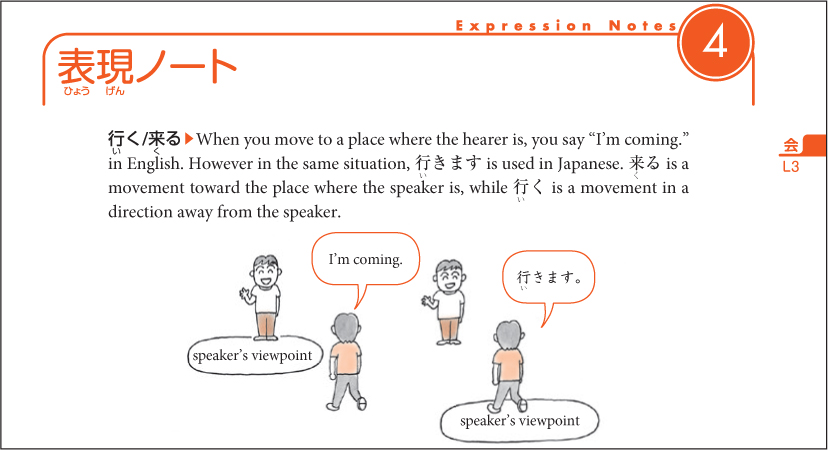









![げんき[第3版] 教師用データ集](/images/intro/bn_data_en-13cdefd26032644661fb920c53f068f8.png)
![げんき[第3版] 教師用データ集](/images/intro/bn_data_en_sp-b892a7a34b2d64961d0dd1a8af7b3637.png)